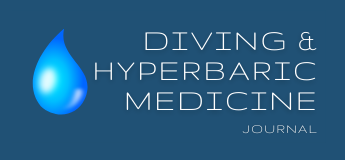David Doolette began breath-hold diving as a teenager in the Mediterranean and learnt open-circuit scuba in 1979, initially diving the shipwrecks along the Atlantic coast of the USA. He 
Since 2005, he has been a Research Physiologist at the US Navy Experimental Diving Unit, responsible for the development and testing of decompression procedures and manned evaluation of closed-circuit UBAs and procedures. He is also an Assistant Research Professor at Duke University. When he remembers to pay his dues he is a member of the Cave Diving Association of Australia, the Australian Speleological Federation, Global Underwater Explorers, and the Woodville Karst Plain Project, where he remains an avid cave explorer; he has been a member of the Undersea Hyperbaric Medical Society since 1987 and received their 2003 Oceaneering International Award. He has been a member of the South Pacific Underwater Medicine Society since 1990 and was the Society's Education Officer from 2001 to 2004.
(An experimentalist, David considers testing whether hydrostatic lung load really does limit the practical length of a snorkel.)
